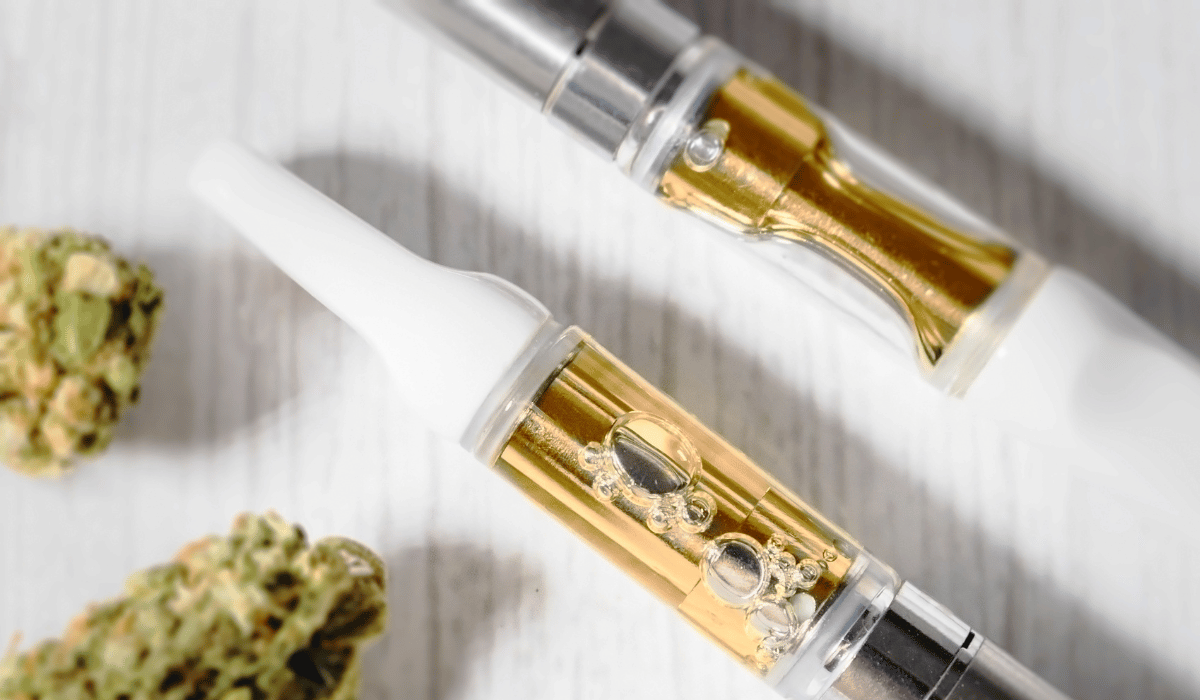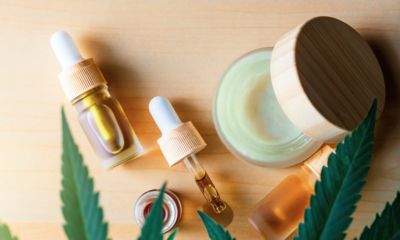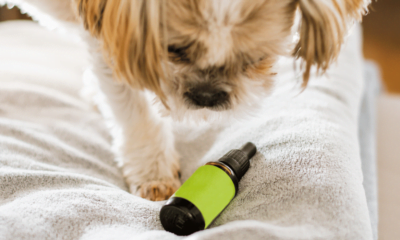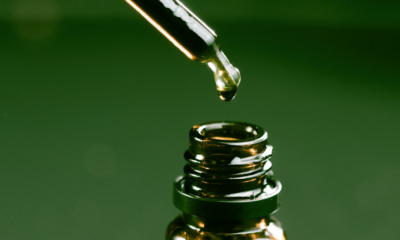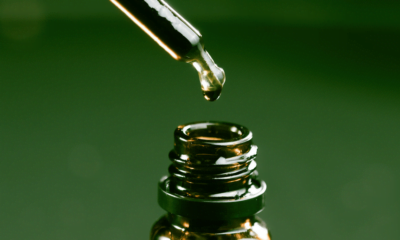Vaping is a popular way to consume CBD, but how safe is it? We take a look at the potential benefits, effects and risks.
While tinctures and oils have conventionally been the most common way of getting a dose of CBD’s potential health and wellness benefits, there are now dozens of different delivery methods making their way onto the market.
Vaping is an increasingly popular way to consume cannabinoids due to its fast-acting effects and ease of use. But not all vape oils are made equal and some may contain chemicals which could do more harm than good.
Vaping is one of the quickest routes of administration of CBD, as it is absorbed into the bloodstream directly from the lungs. CBD can also be taken orally, sublingually (under the tongue) or ingested such as gummies or capsules, but these must pass through the digestive system first, meaning the effects can take up to two hours to kick in.
Most people report that they feel the effects of CBD from vaping within a few minutes, which may be particularly important for those experiencing symptoms which may require instant relief, such as pain or anxiety.
What is in a CBD vape?
It is, however, important to exercise caution when using CBD vape and liquids. The long-term effects of vaping, especially when certain additives or flavourings are used, are still being studied, and there have been concerns about the safety of certain products.
CBD vape cartridges work by being heated by a coil which is connected to a battery. This heat then turns the liquid into a vapour which can be inhaled directly into the lungs. In order for this to work, CBD vape requires a carrier liquid that is capable of vaporising without burning, clogging or evaporating. A liquid that is too thin will evaporate too quickly and is a risk of burning, while a liquid that is too thick will not vaporise at all and will clog up the system.
For this reason, CBD vape liquid is typically made by combining CBD distillate with an agent such as vegetable glycerin (VG), propylene glycol (PG) or Medium chain triglycerides (MCT) oil further enhanced with botanical or naturally occuring cannabis terpenes.
What are the risks?
When some of these carrier agents – sometimes referred to as ‘cutting agents’ – are heated, they produce potentially harmful cancer-causing carbonyl compounds, including formaldehyde.
To date most of the research in this area has been done on e-liquids and e-cigarettes, with little to no studies carried out on the effects of heating thinning agents in vaporising devices specifically designed for cannabis.
One 2017 study found that when heated to high temperatures, propylene glycol can break down into microscopic polymers that can cause damage to lung tissue.
A separate study from the same year heated PG,VG, MCT and Polyethylene glycol (PEG) 400 to 230°C to detect what quantities of harmful compounds such as formaldehyde, acetaldehyde, and acrolein were produced. Polyethylene glycol 400 produced much higher acetaldehyde and formaldehyde byproducts than the other three agents, but propylene glycol also produced significantly greater formaldehyde byproduct.
The authors concluded that those who consume products made with these agents ‘may risk exposure to harmful formaldehyde levels’.
MCT oil also produces several hydrocarbons and reactive aldehydes when heated, which can cause damage to the lungs and has been found to be present in some cases of e-cigarette or vaping product use-associated lung injury (EVALI).
What are the alternative options?
Some manufacturers are now using terpenes to help thin the oil while also improving the taste. Different extraction methods such as CO2 may also be able to produce a thin enough hemp extract CBD vape to be consumed in a cartridge without the need for additional agents.
It is also possible to make vape cartridges using CBD distillate. CBD distillate is a further refined version of the extract which has gone through additional processes including heating and cooling to separate the compounds and remove impurities, resulting in an almost pure form of CBD.
Being more refined, CBD distillate vape oil, has a clearer colour and a thinner consistency meaning it doesn’t require the addition of cutting agents. It typically has a milder flavour profile compared to pure hemp extract infused CBD vape due to the absence of many other compounds like naturally occurring cannabis terpenes, making it popular among those who prefer less intense flavour or wish to avoid any traces of THC.
However, the manufacturing process of pure hemp extract infused CBD vape is usually more expensive due to the additional process involved, resulting in a more expensive end product.
Final thoughts
Vaping is a fast-acting and easy way of dosing and consuming CBD, particularly for those looking for instant relief. Ultimately, the choice between hemp extract infused CBD vape oil and CBD distillate vape oil comes down to personal preference and individual needs but it’s always important to consider what is in your product and the potential health effects.
When purchasing CBD vape in cartridges or in CBD disposable vape pens always check the ingredients list and if chemicals such as PG, VG or MCT are listed you may wish to avoid it. It may be tempting to go for the more affordable option, but these are often made using cheaper and potentially more harmful ingredients. As with anything you intend to consume, it’s worth considering spending more on a product that will last longer and is less likely to cause harm.


 News6 months ago
News6 months ago
 Science5 months ago
Science5 months ago
 Industry6 months ago
Industry6 months ago
 News6 months ago
News6 months ago
 News5 months ago
News5 months ago
 Health5 months ago
Health5 months ago
 News5 months ago
News5 months ago
 Health3 months ago
Health3 months ago